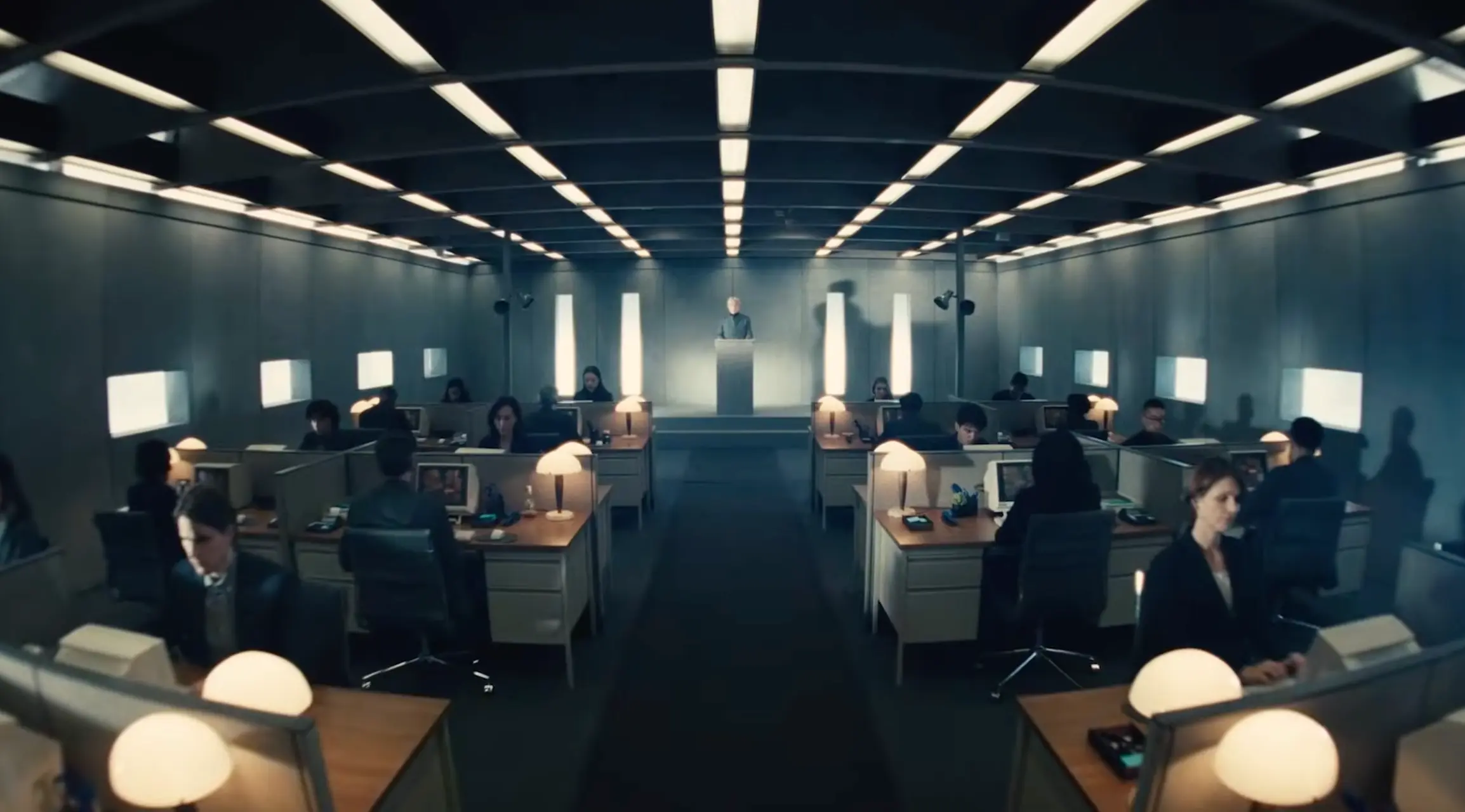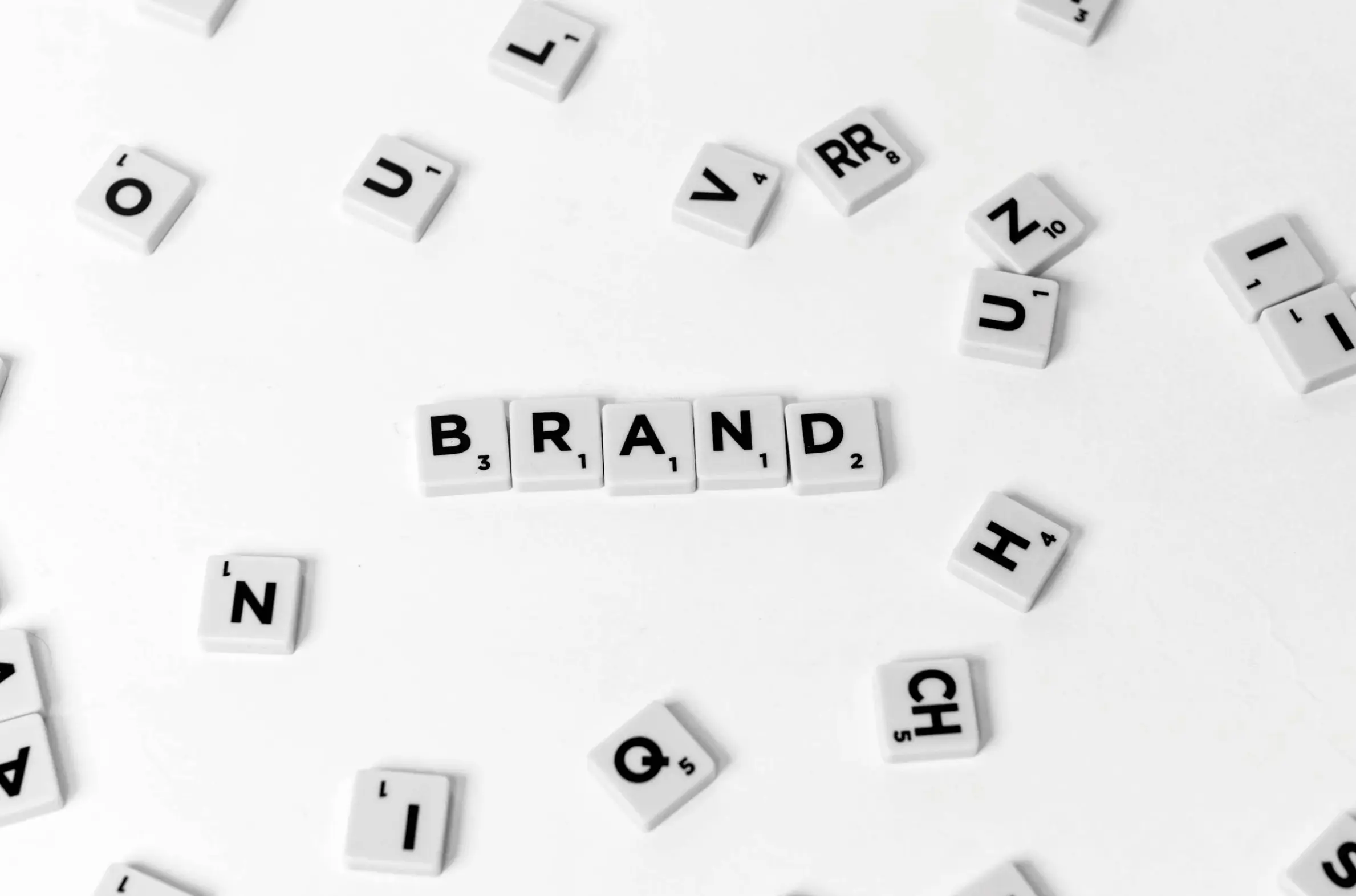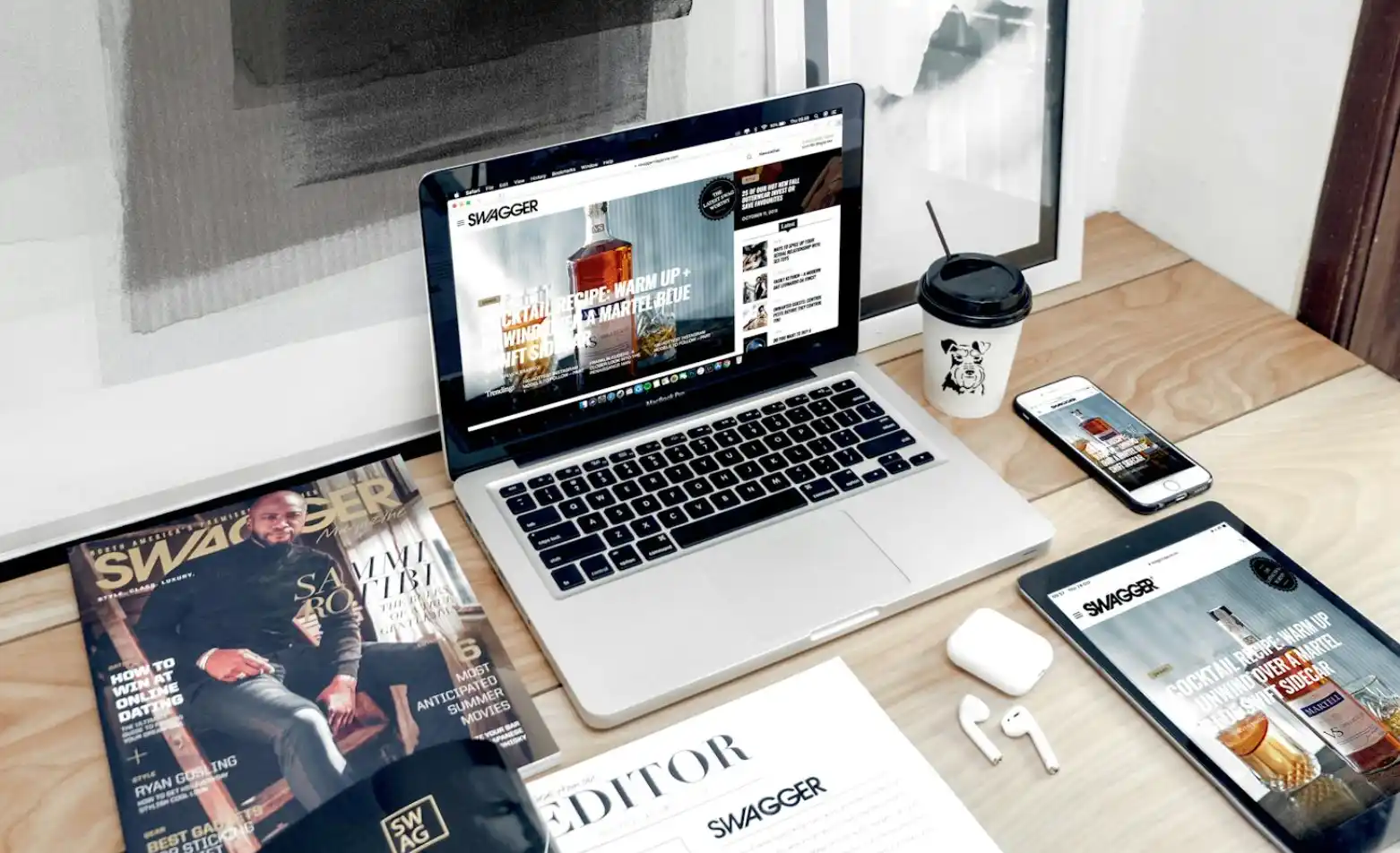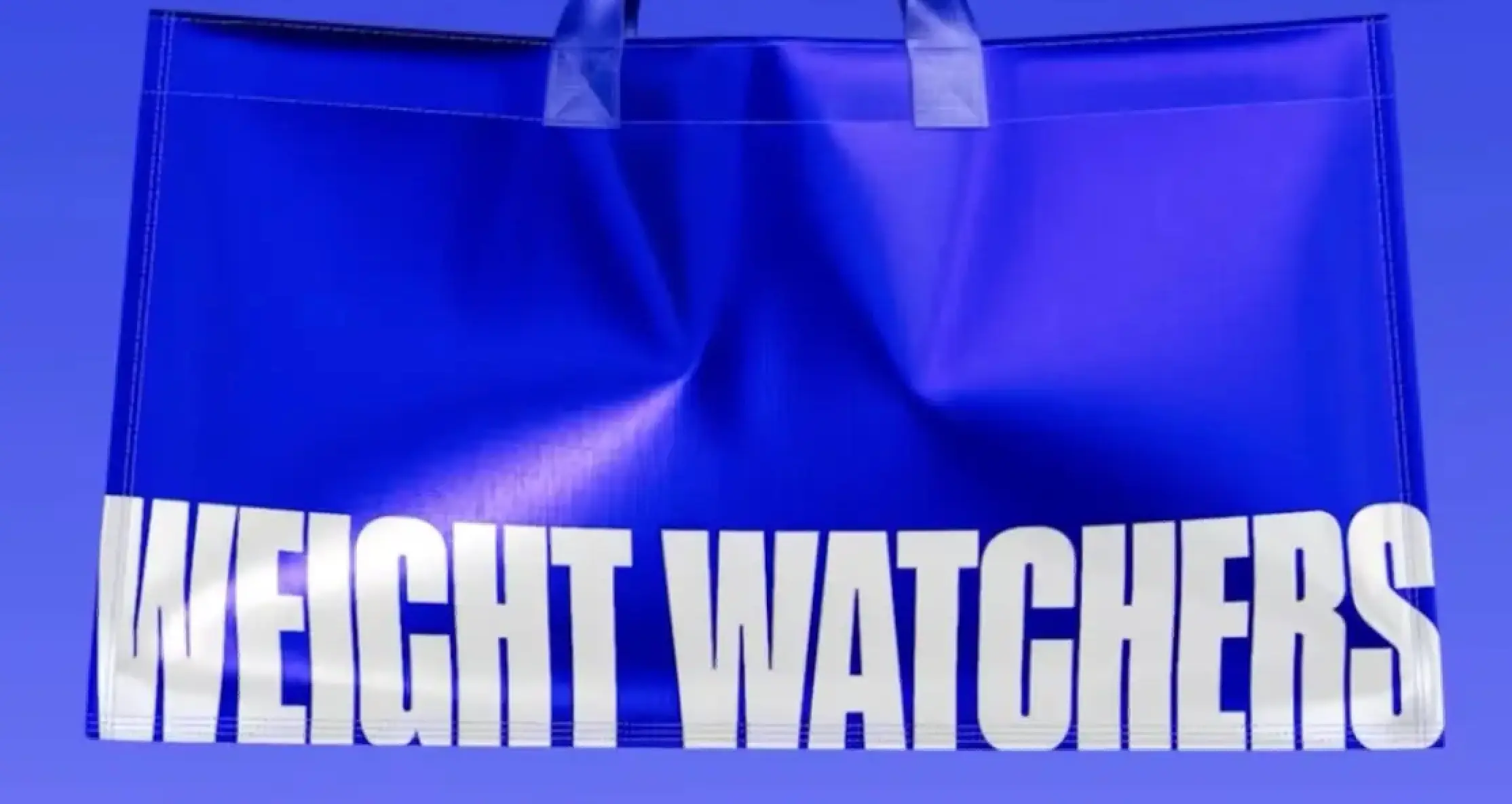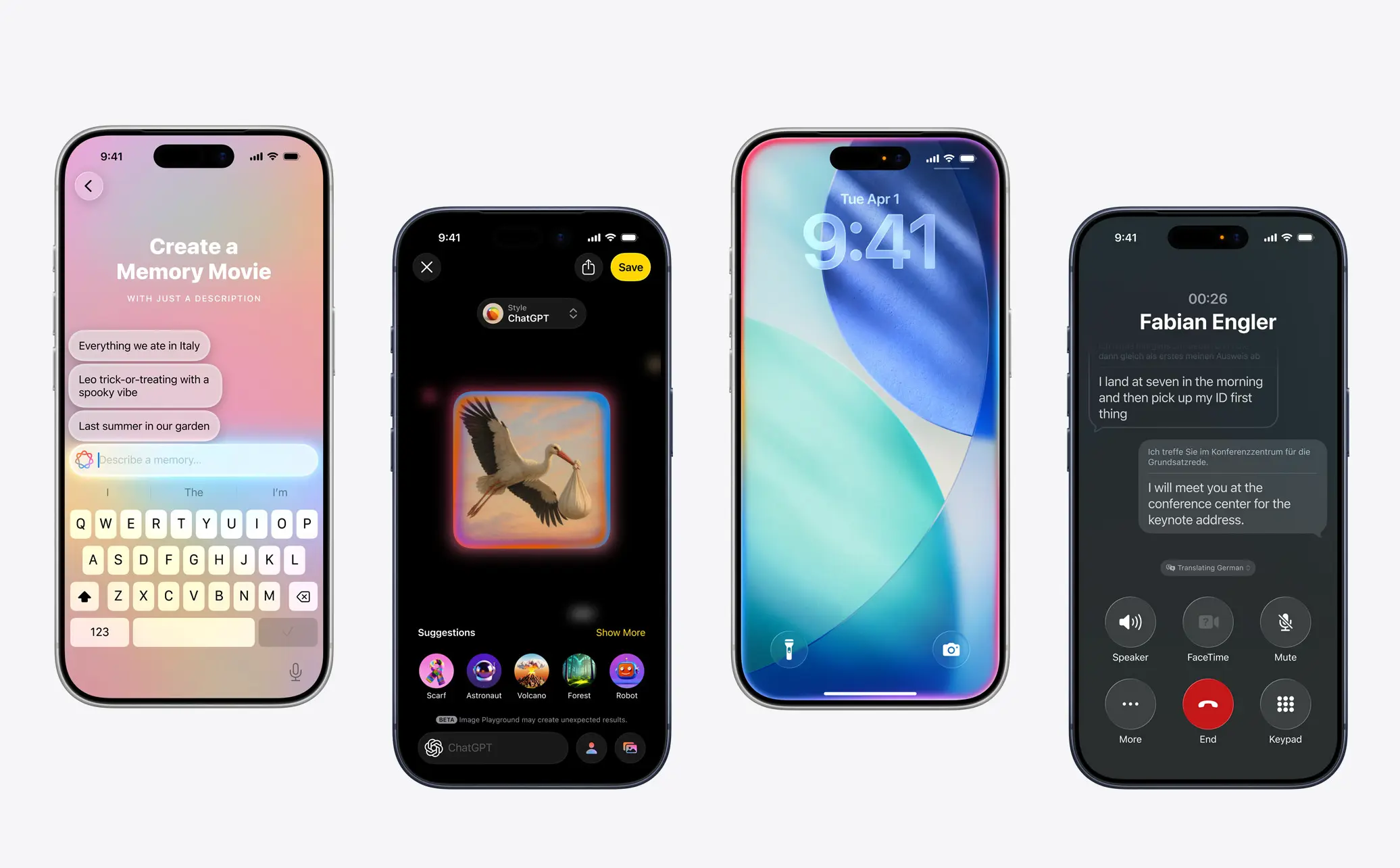The Most Viral Billboard Ads Of All Time: 11 Iconic Billboards That Shook The World
Updated on
Published on
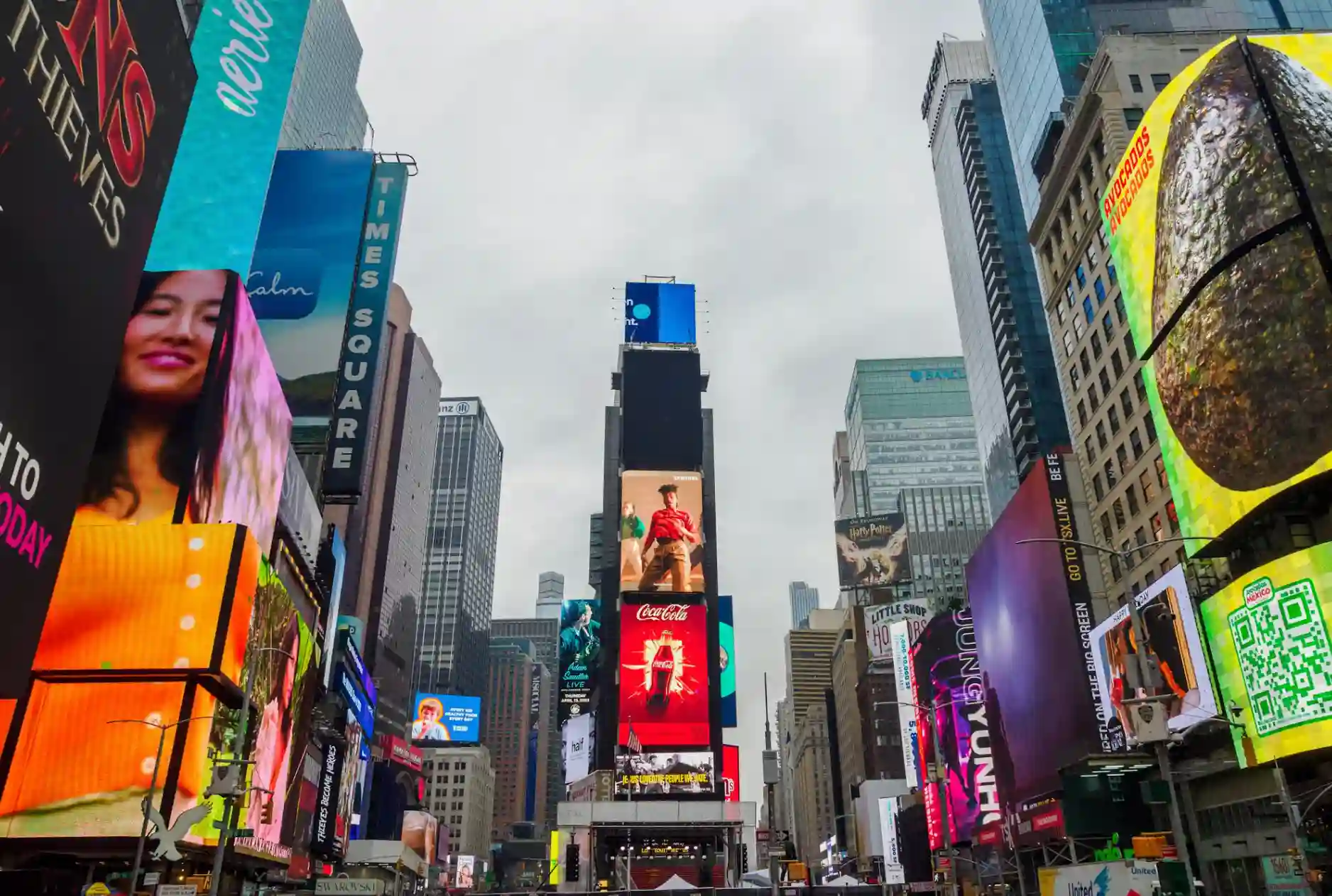
Great outdoor grabs you by the collar in three seconds, then lives in your head for years. The most viral billboard ads do this with simple ideas, precise timing, and a bit of theatre. When you study the most famous billboard ads across decades, the pattern is clear: iconic billboards earn coverage, spark memes, and move product because the creative device is impossible to ignore. If you care about designing messages people actually share, this canon of the most viral billboard ads shows how iconic billboards became the most famous billboard ads in culture.
At a glance
- Real-time and context-aware ideas turn spectators into participants and help the most viral billboard ads spread fast
- Simple, scalable visuals travel well on phones and newsfeeds, which is why iconic billboards keep getting reshared
- Earned media is the multiplier that turns one site into national buzz for the most famous billboard ads
- New tech like 3D robotic screens and anamorphic video rewards stop-and-stare moments people love to film
- Controversy, wit, or utility often pushes iconic billboards from clever to unforgettable
How we chose these
- Cultural impact measured by news pickup, social sharing, awards, and longevity
- Clarity of the idea in a single image or short clip that fits how the most viral billboard ads spread
- Verifiable documentation from reputable industry and news sources
1) British Airways “Look Up” makes London literally look up (2013)
A child on the screen points to a real aircraft overhead while the board reveals the flight number and origin. British Airways’ “Magic of Flying” used live flight data to trigger the creative at Piccadilly Circus and near Heathrow, turning a familiar sky into a live show that made passersby smile and share clips. It is the rare outdoor idea that explains itself instantly, delights families, and still sells fares by tying magic to specific routes. Coverage from travel and advertising press pushed the stunt worldwide within hours, placing it among the most viral billboard ads of the 2010s. (Condé Nast Traveler) (Campaign Asia)
- Where: Piccadilly Circus and Chiswick in London
- Why it spread: a one-sentence premise you can film on your phone
- Agency: OgilvyOne London, with media and tech partners credited across case write-ups
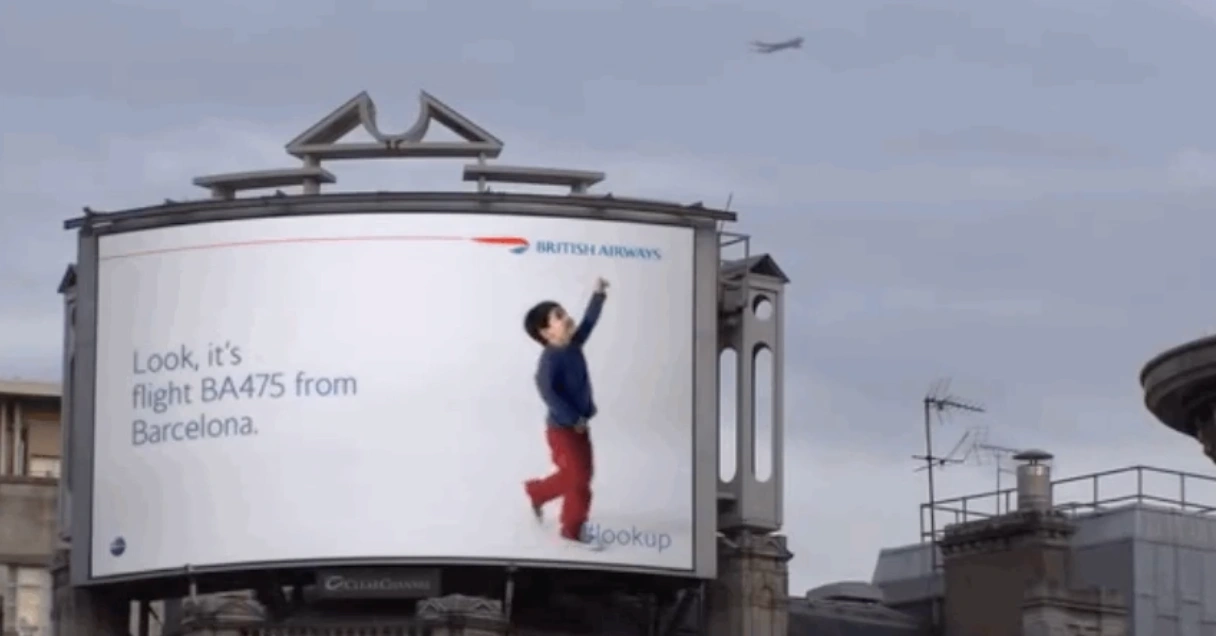
2) Audi vs BMW turns a Santa Monica corner into a chess match (2009)
Audi provoked BMW with “Your move, BMW.” BMW answered across the street with “Checkmate,” and the billboard war was on. The back-and-forth lived far beyond Los Angeles as car sites and general media framed it as a brand duel people could pick a side on. That tone, half sports rivalry and half meme, is why this remains one of the most famous billboard ads in auto and a staple in lists of iconic billboards. (Adweek) (Forbes)
- Where: Santa Monica, then echoed globally in press and social
- Why it spread: a clear storyline in two frames, perfect for blogs and forums
- Lasting lesson: keep the copy short so the internet can do the rest
3) McDonald’s “Sundial” tells time with a giant M (2006)
Leo Burnett turned the Golden Arches into a working sundial beside Wrigley Field, with the shadow landing on breakfast items as morning moved along. It is physics as copywriting, and it photographed beautifully, which is why the campaign resurfaces every few years to fresh awe and debate. Among iconic billboards, this one shows how a single photograph can travel everywhere and earn media without a big tech stack. (Adland) (Creative Bloq)
- Where: Chicago, near Wrigley Field
- Why it spread: one striking photo explains everything
- Agency: Leo Burnett Chicago, with collaborators on production details
4) Apple’s iPod silhouettes turn billboards into pop (2003)
The dancing silhouettes with white earbuds and candy-colour backgrounds escaped TV and wrapped cities, turning any wall into an instant Apple signal. The look launched artists, sold iPods, and made the white earbud a status icon seen from a block away. It remains a masterclass in logo-light branding and visual rhythm and still ranks among the most famous billboard ads of the 2000s. (Billboard)
- Where: global outdoor and transit wraps
- Why it spread: bold colour, zero clutter, music you wanted to Shazam later
- Origin: TBWA\Chiat\Day’s 2003 launch scaled across OOH
5) Spotify’s data-driven “Thanks 2016, it’s been weird” (2016)
Spotify’s end-of-year billboards put anonymised listening habits on blast with wry headlines that felt written for screenshots. The tone was playful and human, and the executions were tailor-made for photos on social feeds, which is why the campaign keeps returning as a seasonal OOH ritual. It is often cited when marketers discuss the most viral billboard ads driven by copy. (Adweek)
- Where: 14 countries in the first year
- Why it spread: personal yet anonymous data jokes people love to share
- What it proved: smart copy plus big type can beat tech gimmicks
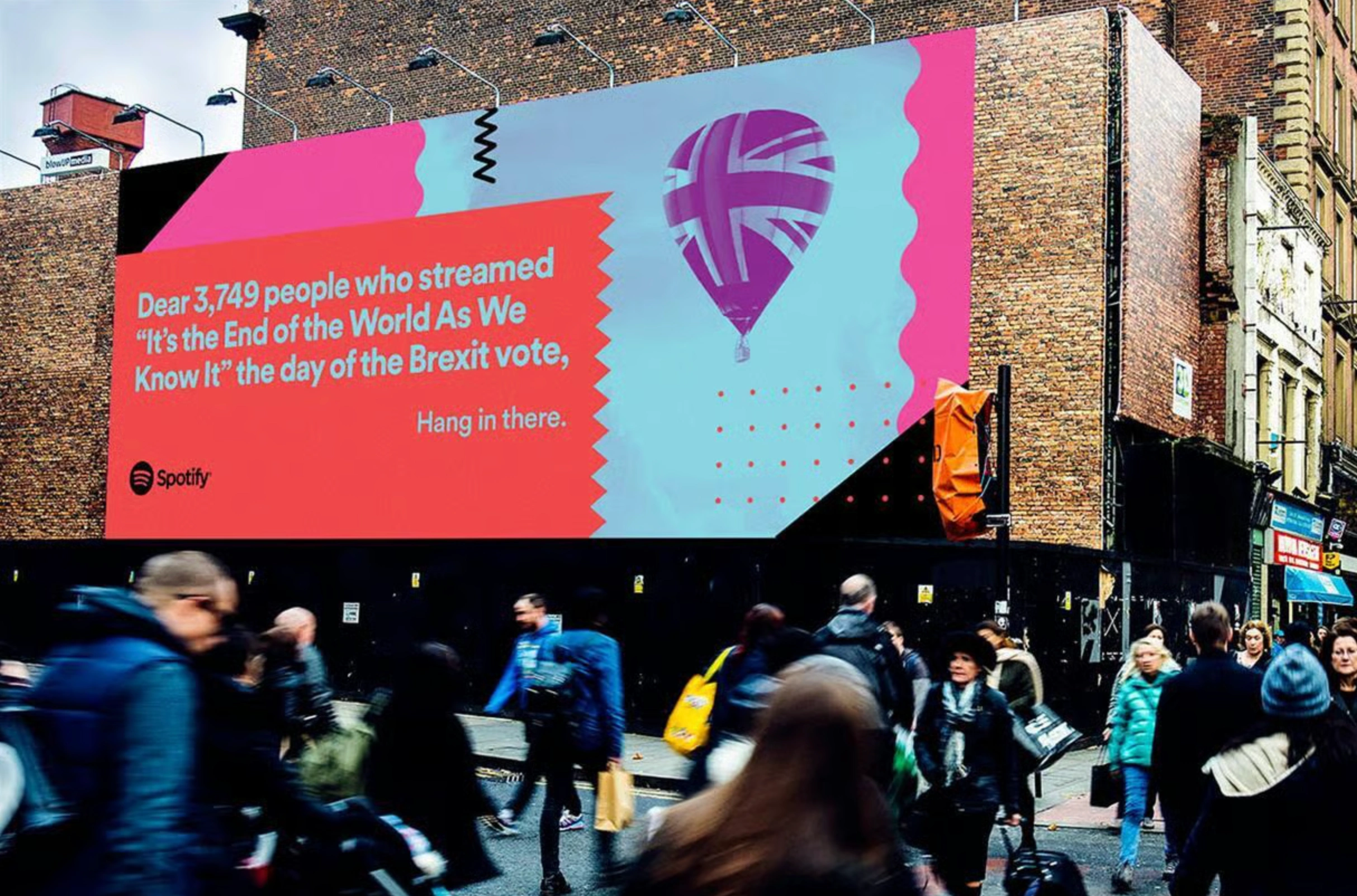
6) Coca-Cola’s 3D robotic Times Square spectacular (2017)
Coke unveiled a six-storey kinetic billboard made of more than 1,700 moving LED cubes that extend and retract to sculpt content in 3D. Guinness World Records recognised it as both the first and the largest 3D robotic billboard, and award shows followed. The spectacle redefined what a site could do and spawned endless street videos, cementing its place among iconic billboards that everyone filmed. (Guinness World Records) (The One Club)
- Where: Two Times Square, New York
- Why it spread: never-seen-before motion that begged to be filmed
- Build partners and credits are documented across case write-ups and trade press
7) Wonderbra’s “Hello Boys” becomes shorthand for shock OOH (1994)
The Eva Herzigová poster is still cited as a traffic-stopping moment that defined 90s outdoor. Voted the greatest poster in Campaign’s Outdoor Hall of Fame and analysed for its cultural impact, it shows how a single image can become global shorthand. Its notoriety kept Wonderbra in headlines for decades and locked it onto every list of the most famous billboard ads of all time. (Marketing Week)
- Where: UK and beyond, with London sites becoming pilgrimage photo spots
- Why it spread: an instantly iconic visual plus a cheeky two-word line
- Lesson: controversy can fuel virality, but brand fit must be crystal clear
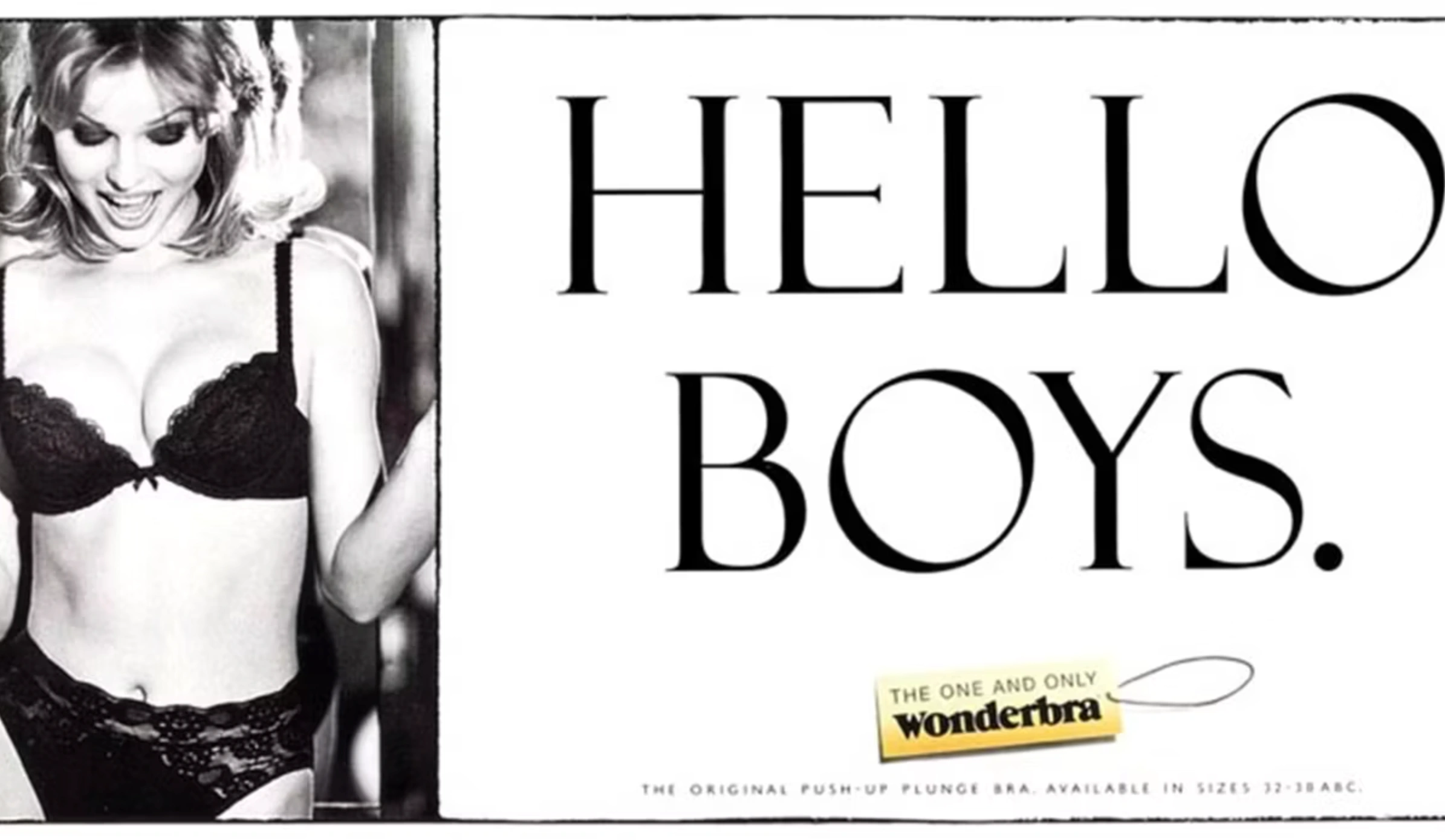
8) BBC “Dracula” reveals the Count at sunset (2019)
By day the board shows a field of bloody stakes. As the sun sets, those stakes cast a perfect shadow that forms Dracula’s face. BBC Creative’s build ran in London and Birmingham, then exploded online via a time-lapse that packed the transformation into ten seconds. Pure craft, simple payoff, massive earned reach, and now a fixture in conversations about the most viral billboard ads of the last decade. (Creative Review) (D&AD)
- Where: Brixton Road and Upper Dean Street
- Why it spread: a magic trick you can witness live or in a short clip
- Awards: Outdoor honours and a surge of press across design and mainstream media
9) Orphea turns a Milan billboard into a giant bug trap (2013)
Publicis Italy applied transparent adhesive in the shape of a spray plume. Over days, insects stuck to the surface, revealing the “spray” in a way only reality could. It is visceral, slightly gross, and impossible to forget, which is why the case video keeps getting rediscovered and why many rank it among the most viral billboard ads in European OOH. (JCDecaux)
- Where: Milan
- Why it spread: time-lapse satisfaction and an idea you can describe in one sentence
- Lesson: when the medium becomes the product demo, credibility jumps
10) Corona’s “Luna Corona” turns the moon into a lime wedge (2013)
On specific nights in New York, a crescent moon aligned with a bottle visual so the moon became the iconic lime. The setup required astronomers, patience, and a perfect vantage. Photos went everywhere and the brand added a nightlife chapter to a daytime image. Cannes-recognised, widely covered, and still copied, it stands among truly iconic billboards that work with nature. (Adweek) (Forbes)
- Where: Chelsea, New York, timed to lunar phases
- Why it spread: a cosmic sight-gag that rewards being there
- Lesson: context is a creative asset when the environment does half the work
11) The Camel “smoke rings” of Times Square (1941)
From the 1940s to the mid 60s, a giant Camel board puffed steam rings every few seconds over Times Square. Pre-internet, it still drew crowds, postcards, and news mentions, proving that spectacle has always been the engine of iconic billboards. Modern restrictions ended the run, but its legend remains a reference point for big-city OOH and a precursor to many of the most famous billboard ads that followed. (Signs.com)
- Where: Hotel Claridge facade at Broadway and 44th Street
- Why it spread: mechanical theatre people talked about for decades
- Legacy: a direct ancestor to today’s kinetic screens and special builds

FAQ
What actually makes a billboard go viral today?
A one-glance idea that films well on a phone plus context that adds delight.
Do 3D and anamorphic screens always win?
They work only when the idea is simple and movement itself carries the message.
Are provocative images still effective, or just risky?
They can spike recall yet raise reputation risk, so use them only when brand fit is rock solid.
What is the simplest formula I can copy without big tech?
Big type, one joke, one truth that screenshots cleanly.
How many sites do I need for national buzz?
Sometimes one perfect, filmable site is enough if the premise is fresh.
The takeaway for brand teams
Make the idea photograph itself. When the concept reads in one glance, lives as a five-second clip, and still feels clever on the tenth share, you are in the territory of the most viral billboard ads. Keep the premise simple, pick a site that adds meaning, and build for the camera as much as the sidewalk. Do that and you will join the short list of truly iconic billboards that become the most famous billboard ads for years to come.

